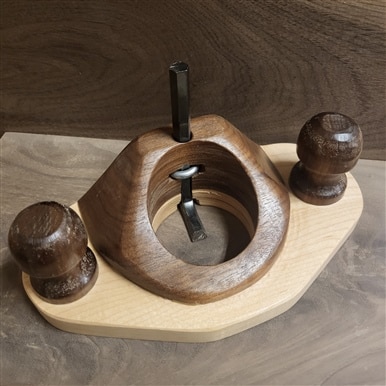There are many great topics that relate to tools, and there are endless numbers of tools to discuss, but inevitably we run into situations where we don't have a good tool for the job and have to cobble a tool together to complete the work.
I make some little tool to do a specific job all the time, but I never stop to think whether it is a remarkable tool. I don't even document that I made a tool.
I don't think we ever asked the question - what is the best tool you ever made, so I'm asking now. If you are like me it is going to take some time to recall something significant. In fact I am posting this question before I even have my own answer, but give it some thought. I suspect the answers will be interesting.
My most recent tool was just a wooden needle to apply ink to a 3D print - much more precise than a paint brush. I'm sure when I scan through some of my projects, I will come up with something better....

